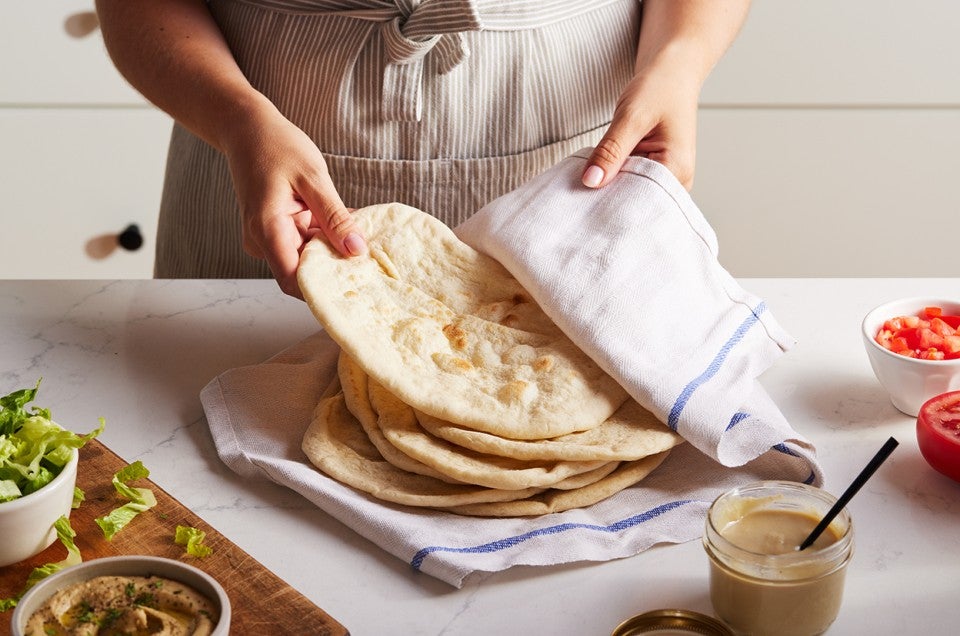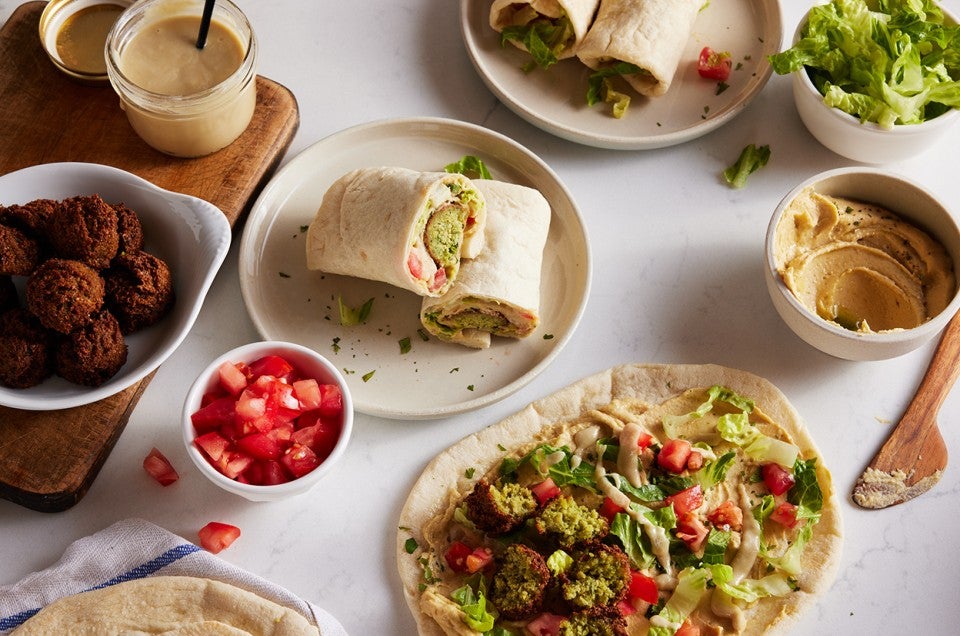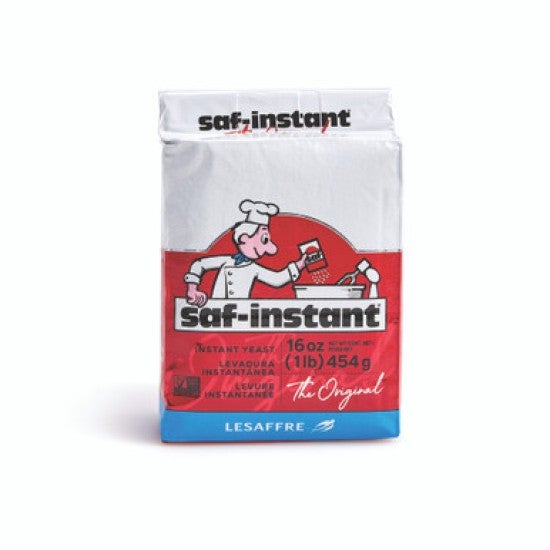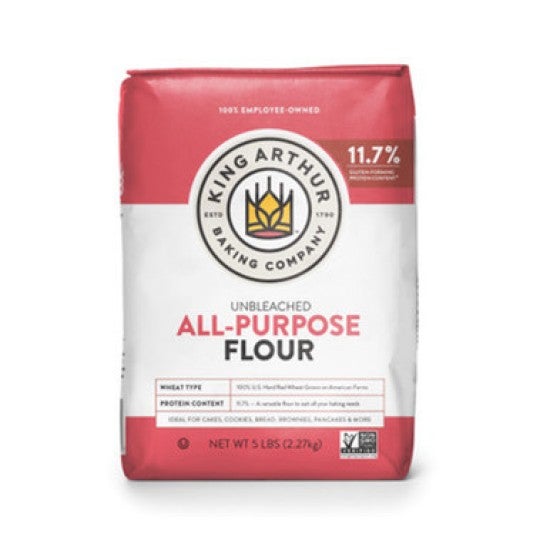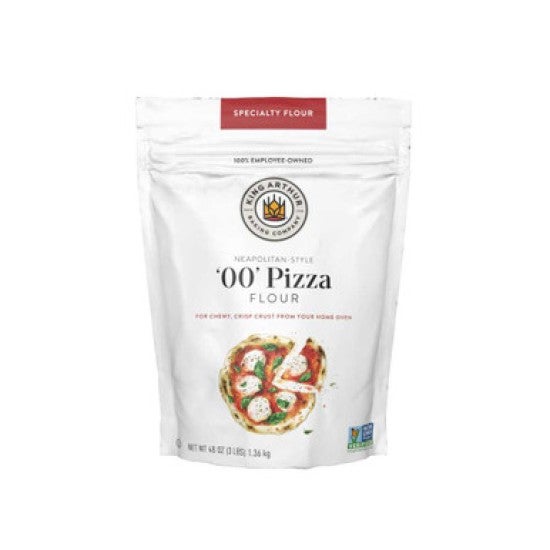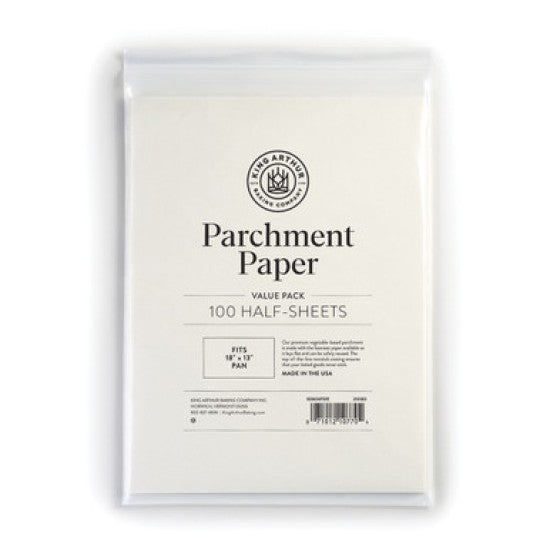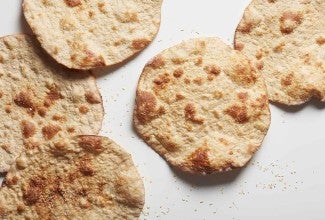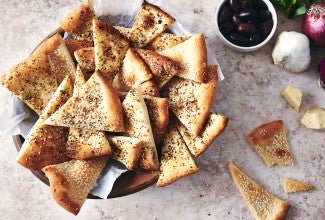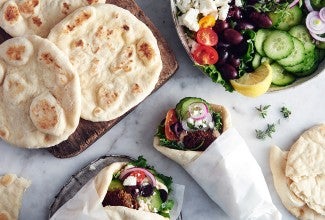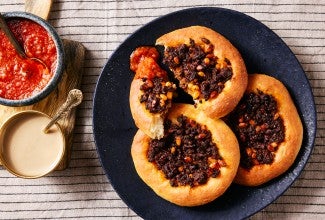-
To make the preferment: In a medium bowl, combine the yeast, flour, and water, mixing until no dry spots remain and a wet, sticky mixture forms. Cover and let it rest at room temperature for 1 hour; the preferment will look smoother and some small bubbles will be visible.
-
To make the dough: Weigh your flour; or measure it by gently spooning it into a cup, then sweeping off any excess. Add the flours, oil, salt, yeast, and water to the bowl with the preferment. Mix until a mostly cohesive dough with a few dry bits forms.
-
Transfer the dough to a lightly floured work surface and knead until the dough is smooth and springy, 5 to 8 minutes. The dough will be slightly sticky at first then will smooth out. Add just enough additional flour to keep the dough from sticking to your hands and work surface. Use a bowl scraper or bench knife to scrape up any dough that sticks to your work surface; this will reduce the amount of extra flour you need to add. Cover and let the dough rest for 1 hour. The dough will be relaxed (when pressed with a floured finger it will not spring back) but will not rise much.
-
Transfer the dough to an unfloured work surface and divide it into 8 even pieces (about 107g each). Preshape each piece of dough into a loose round and place seam-side down on a lightly dusted work surface. Cover and let rest for 1 hour; this will make it easier to roll out thinly.
-
While the dough is resting, preheat the oven to 500°F with a baking steel or stone on the bottom rack.
-
On a lightly floured surface, roll each piece of dough into a 13" x 9" oval. As the dough gets thinner, it may resist stretching. If this happens, flour the back of your hands and drape the dough over them. Gently stretch the dough by pushing one hand away from you while pulling the other hand toward you. Stretch the dough as evenly and thinly as possible; the edges will be slightly thicker than the center. Brush off any excess flour.
-
When the first flatbread is ready to bake, switch the oven to broil. Transfer the dough to a lightly floured baker’s peel or the back of a baking sheet, then slide it onto the preheated baking steel or stone. Broil for 30 seconds to 1 minute. The dough will blister and puff and light brown spots will appear on top of the bread. Using tongs or a peel, carefully remove the lavash from the oven. Stack the baked lavash on a clean kitchen towel, wrapping to cover. Continue shaping, baking, and stacking the remaining lavash.
-
Storage information: Lavash is best eaten the day it's baked. If there are crisp areas on the flatbread after cooling, spritz them lightly with water, cover with a towel, and let them rest 30 minutes. The lavash will absorb the water, soften, and become pliable. Fold any leftovers and store in a plastic bag to keep them soft, up to 2 days.
